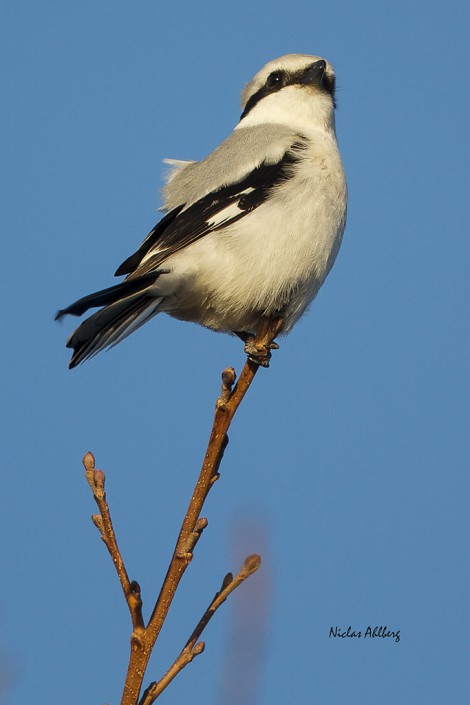This post is also available in: Swedish
Great grey shrike – Lanius excubitor
Great grey shrike – Lanius excubitor
northern grey shrike, or northern shrike is a large songbird species in the shrike family (Laniidae). It forms a superspecies with its parapatric southern relatives, the southern grey shrike (L. meridionalis), the Chinese grey shrike (L. sphenocerus) and the loggerhead shrike (L. ludovicianus). Within the great grey shrike species itself, there are nine subspecies. Males and females are similar in plumage, pearly grey above with a black eye-mask and white underparts.
Breeding takes place generally north of 50° northern latitude in northern Europe and Asia (where it is known as the great grey shrike), and in North America (where it is known as the northern shrike) north of 55° northern latitude in Canada and Alaska. Most populations migrate south in winter to temperate regions. The great grey shrike is carnivorous, with rodents making up over half its diet.
Within the great grey shrike species, nine subspecies can be recognized. They can be divided into three groups, occurring in western Eurasia, eastern Eurasia and North America, respectively.
This species is territorial, but likes to breed in dispersed groups of a good half-dozen adults. It is not known to what extent the birds in such groups are related. In the temperate parts of its range, groups are perhaps 5 km (3.1 mi) apart, while individual territories within each group may be as small as 20 ha (49 acres) but more typically are about twice that size. In less hospitable climes, territories may be more than 350 ha (1.4 sq mi). Throughout the breeding season, in prime habitat, territories are held by mated pairs and single males looking for a partner.
It sounds like this
Recording by Tero Linjama from Xeno canto















